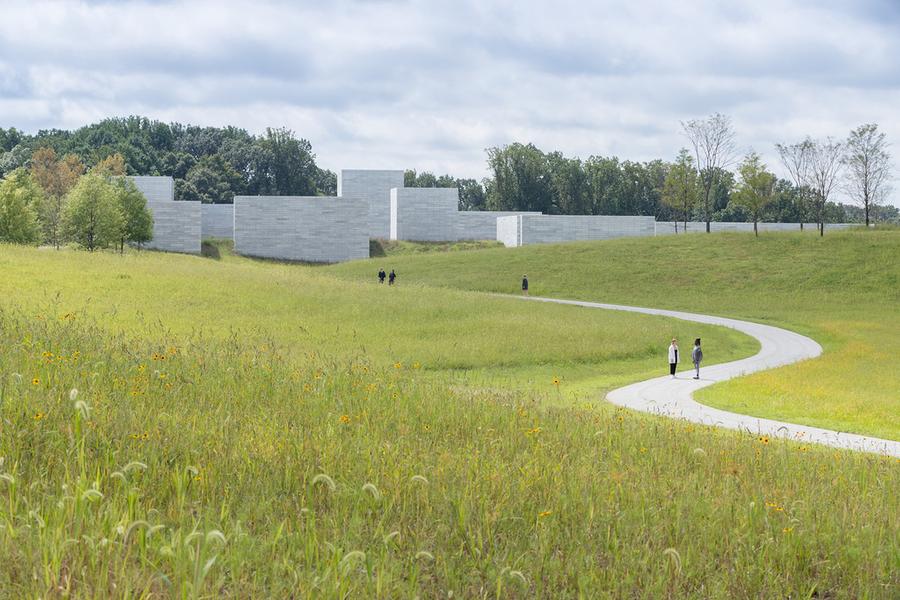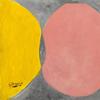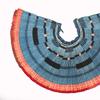$200m Expansion of Glenstone Museum Opens to the Public on October 4
- POTOMAC, Maryland
- /
- September 24, 2018

Glenstone Museum in Potomac, Maryland, will begin welcoming the public on October 4, 2018, revealing the results of a five-year expansion that has at last fully realized its founders’ vision of art, architecture, and landscape merged into a seamless experience.
Established by Emily Wei Rales and Mitchell P. Rales, Glenstone opened in 2006 and now includes a new 204,000-square-foot museum building called the Pavilions, designed by Thomas Phifer of Thomas Phifer and Partners; an additional 130 acres of rolling meadows, woodlands, and streams, designed by Adam Greenspan and Peter Walker of PWP Landscape Architecture; an Arrival Hall and bookstore; and two cafés. The original 30,000-square-foot museum building, called the Gallery, was designed by Charles Gwathmey of Gwathmey Siegel & Associates Architects, and opened in a 100-acre setting. With the addition of its new facilities, Glenstone now offers the public a total of 59,000 square feet of indoor exhibition space in two buildings, with all works drawn from its own renowned collection of modern and contemporary art, and 230 acres of serene, unspoiled landscape incorporating installations of major works of outdoor sculpture.

“Mitch and I have been dreaming for years about the day when we’d be able to pull back the curtain and reveal the new Glenstone,” said Emily Rales, director and co-founder of Glenstone. “Now, at last, the art installations and buildings and landscape are complete, and people can finally encounter Glenstone as a whole, as we’ve always meant for it to be seen. We’re excited by Glenstone, and we hope our visitors will share that feeling, now and for many years to come.”
“We’re deeply grateful to everyone who has worked with us to create Glenstone: the great artists who have given us their trust and collaboration, the magnificently talented architects and landscape architects who have been our partners, and the wonderfully dedicated professional staff who have lived this journey with us every step of the way,” said Mitchell P. Rales, co-founder. “Now we’re thrilled to welcome the people who are really the most important collaborators of all: the visitors for whom we’ve built the new Glenstone.”
Admission to Glenstone is always free, with visits scheduled on the website (www.glenstone.org).
The integration of architecture with landscape, and both with art, is key to the experience of Glenstone. “We considered the landscape as the inspiration,” Thomas Phifer explains. “The visitor’s arrival is choreographed through the trees and open fields, heightening your experience with the land and revealing the subtle qualities of the site. From your first moments at Glenstone you experience a place with few distractions, the bustle of ordinary daily activities drops away, and your mind and soul prepare for an intimate encounter with art.”
Inaugural Presentations in the Pavilions
The Pavilions, constructed of stacked blocks of concrete inset with broad expanses of glass, is embedded into the landscape of Glenstone like a natural feature. From the outside, the building appears to comprise a group of eleven separate masonry structures, reminiscent perhaps of an Italian hill town. Inside, visitors discover eleven distinct rooms—each with a size, proportion, and treatment of light specially suited to its purpose—connected by a glass-walled Passage ringing a lushly planted, 18,000-square-foot Water Court.
Works selected for the inaugural installation of the Pavilions exemplify the philosophy of Glenstone’s collection, representing key moments in the development of art since World War II, a period when our understanding of the nature of art has been continually challenged and redefined. At the time of the opening, nine rooms of the Pavilions house single-artist installations of major works or bodies of work.
The single-artist installations, many realized with the collaboration of the artists, are:
• two large-scale sculptures by Martin Puryear: Big Phrygian, 2010-2014, and The Load, 2012, monumental examples of the artist’s evocations of history, identity, and struggle (Room 1)
• the Moon Landing triptych by On Kawara, 1969, three large-scale canvases commemorating the Apollo 11 lunar landing mission of July 1969, comprising one of the very rare groups of the artist’s Date Paintings designated as a set, installed in a skylit room (Room 3)
• Untitled, 1992, by Robert Gober, a major three-section installation work first presented at Dia Center for the Arts, shown for the first time on long-term view (Room 4)
• Collapse, 1967/2016, by Michael Heizer, a sculpture of 15 steel beams placed in a seemingly chance arrangement within the constructed negative space of a rectangular pit (Room 5), with Heizer’s 1968/2016 Compression Line constructed in the landscape outside the building
• Ever is Over All, 1997, by Pipilotti Rist, an immersive, two-channel video and sound installation featuring the artist in a staged on-the-street performance (Room 6)
• four sculptures by Charles Ray—Table, 1990, Fall ’91, 1992, The New Beetle, 2005, and Baled Truck, 2014—presented with Ray’s collaboration as the first in an ongoing series (Room 8)
• Livro do Tempo I, 1961, by Lygia Pape, an assemblage of 365 unique wooden geometric reliefs, each representing one day of the year (Room 9)
• Moss Sutra with the Seasons, 2010-2015, by Brice Marden, a magisterial five-panel painting that is the artist’s only commissioned work, bathed in a natural light that comes through clerestory windows (Room 10)
• and five sculptures, 1951-1991, by Cy Twombly, selected in consultation with the artist (Room 11)
The largest room in the Pavilions (Room 2), with 9,000 square feet of column-free space, houses an inaugural installation of 65 artworks by 52 artists, dating from 1943 to 1989. Showing the depth and breadth of Glenstone’s collection, these iconic examples of movements including Abstract Expressionism, Gutai, Brazilian modernism, Arte Povera, Minimalism, and post-Minimalism are by Arman, Ruth Asawa, Jo Baer, Jean-Michel Basquiat, Lynda Benglis, Joseph Beuys, Alighiero e Boetti, Lee Bontecou, Marcel Broodthaers, Alexander Calder, Sergio Camargo, Lygia Clark, Willem de Kooning, Marcel Duchamp, Dan Flavin, Alberto Giacometti, Arshile Gorky, David Hammons, Keith Haring, Eva Hesse, Jasper Johns, Donald Judd, Akira Kanayama, Martin Kippenberger, Yves Klein, Franz Kline, Barbara Kruger, Yayoi Kusama, Sol LeWitt, Agnes Martin, Marisa Merz, Sadamasa Motonaga, Bruce Nauman, Hélio Oiticica, Sigmar Polke, Jackson Pollock, Robert Rauschenberg, Faith Ringgold, Dieter Roth, Mark Rothko, Mira Schendel, Richard Serra, Shozo Shimamoto, Kazuo Shiraga, Frank Stella, Clyfford Still, Atsuko Tanaka, Jean Tinguely, Rosemarie Trockel, Anne Truitt, Andy Warhol, and Toshio Yoshida.
On view at the entry to the Pavilions is a language work by Lawrence Weiner, MATTER SO SHAKEN TO ITS CORE TO LEAD TO A CHANGE IN INHERENT FORM TO THE EXTENT OF BRINGING ABOUT A CHANGE IN THE DESTINY OF THE MATERIAL PRIMARY, SECONDARY, TERTIARY, 2002, commissioned by Glenstone. Shown in the Passage along the Water Court areWater Double, v. 3, 2013-2015, by Roni Horn, two of the largest solid cast-glass cylinders the artist has created. In the Viewing Gallery (Room 7), the sole fixed object is a bench designed by Martin Puryear and furniture maker Michael Hurwitz, on which visitors may relax, enjoy a framed view of nature, and browse through a selection of art books recommended by artists featured in the Pavilions. Puryear and Hurwitz also designed a bench that is installed on a platform overlooking the Water Court, a bench in the Entry Pavilion, and benches throughout the Passage.
In the Gallery: Louise Bourgeois: To Unravel a Torment
Since its opening in 2006, Glenstone has used its Gallery building for thematic group exhibitions and monographic surveys, the latter of which have featured the works of Roni Horn, Fred Sandback, and Peter Fischli David Weiss. When the new Glenstone opens on October 4, the Gallery will be installed with the temporary exhibition Louise Bourgeois: To Unravel a Torment. This five-decade survey of Bourgeois’s achievement, drawn entirely from Glenstone’s collection, features nearly thirty works, from the artist’s early wooden “Personage” sculptures (1947-1954) through the room-like installations she called “Cells” (1990-1993) and includes a recently acquired masterpiece, The Destruction of the Father, 1974, that was a turning point in her career. The exhibition, which opened in May 2018, will remain on view through January 2020.
Outdoor Sculpture at Glenstone
Outdoor sculptures integrated into the landscape at Glenstone include major works by Janet Cardiff and George Bures Miller, FOREST (for a thousand years…), 2012; Robert Gober, Two Partially Buried Sinks, 1986-1987; Andy Goldsworthy, Clay Houses (Boulder-Room-Holes), 2007; Felix Gonzalez-Torres, Untitled, 1992-1995, realized posthumously by Glenstone in 2007; Ellsworth Kelly, Untitled, 2005; Jeff Koons, Split-Rocker, 2000, the only permanent installation of this monumental floral sculpture; Richard Serra, Sylvester, 2001, and the commissioned Contour 290, 2004; and Tony Smith, Smug, 1973/2005, realized by Glenstone in its intended painted aluminum version after the artist’s death, in close collaboration with his family.



100x100_c.jpg)












